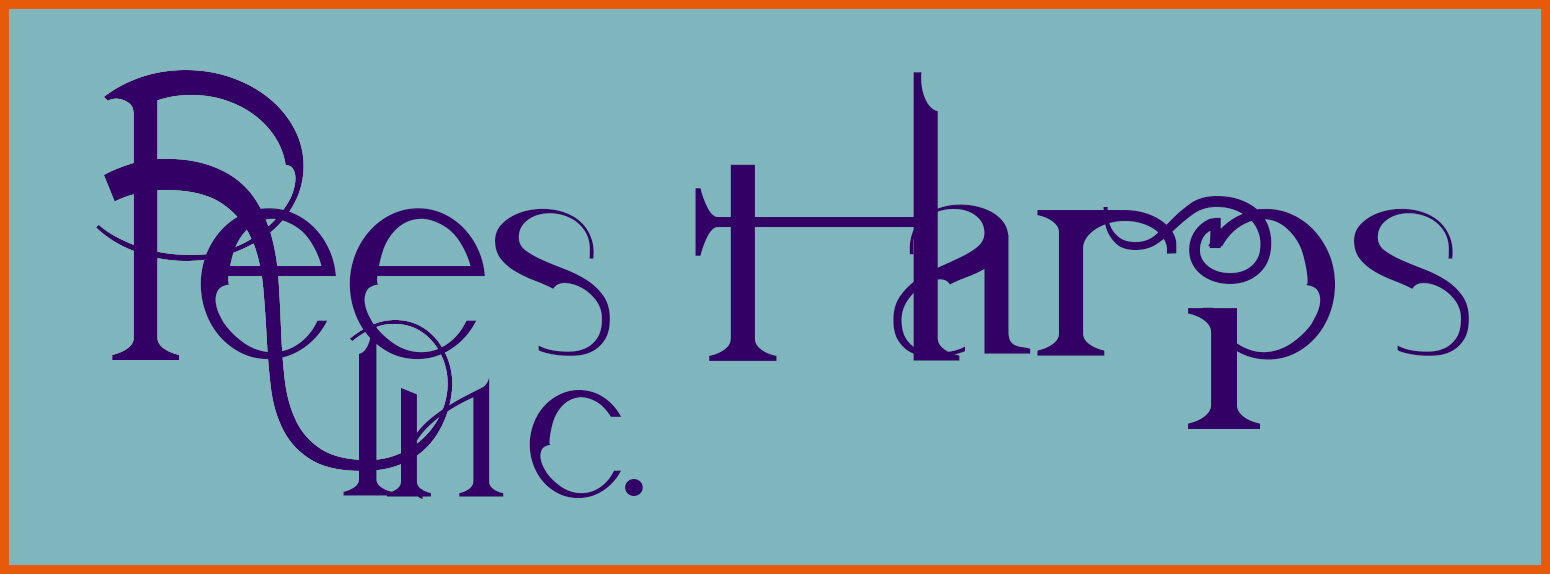Types of Harp Sharping Levers
A sharping lever (not, “sharpening” lever) is a device which raises the pitch of the string one half step. For example, a string tuned to F when the sharping lever is neutral becomes an F# when the sharping lever is engaged or, more interestingly, for those who want to have the key of F in their harp, a string tuned to B-flat when the lever is neutral becomes B-natural when the lever is actuated. The sharping lever allows the harper to play in different keys without having to retune the instrument. Levers also provide for accidentals when necessary.
Sharping levers achieve this by shortening the vibrating length of the string a specific amount with an added fret while slightly stretching the string. This is similar to the first fret on a guitar except that on a harp the sharping lever makes the fret movable, engaging and disengaging the string. A high quality sharping lever will have enough mass and rigidity so that it does not dissipate the string energy and, instead, forces the vibrations back down to the soundboard where they belong.
All sharping devices, including blades, hooks and pedals, displace the string slightly. Some devices displace the string side to side, by a small amount, which changes the spacing between strings. These types of devices include pedal harp discs, the Lyon & Healy Performance lever, the current Salvi levers, the Triplett Ultimate, the levers used by Pilgrim Harps, and all blades and hooks. Other levers displace the string up and down, again, a small amount, keeping the string spacing the same but moving the string out toward the hand of the player. These include the Rees, Truitt, Camac, Loveland and Robinson levers.
Rees Levers
The high quality lever we designed and use on all of our Rees Concert Line Harps.
Truitt Levers
A high quality lever designed by Betty Truitt and available for an up-charge on any Rees Concert Line Harp.
Camac Levers
A high quality lever designed by French harp makers, Camac, and available on any single course Rees Concert Line Harp for an up-charge. Camac levers cannot be installed on the right side of the arch so they cannot be used for double harps.
More on Harp Sharping Levers
In the harp world today, the most recent generation of levers, which includes the Rees, Truitt and Camac levers are all excellent. Professionals tend to have their favorites but it basically comes down to a matter of personal preference and expense.
In the 1960’s and 70’s, Robinson levers were the standard lever. They were a fine lever in their day and we used many of them on harps, particularly on our Harpsicle® Harps line, in the past. The Loveland lever eventually came along and afforded improvements which caused it to supplant the Robinson for concert use and we used Lovelands on our concert line harps up to the early 2000's. The Loveland, however, with its plastic cam and sheet brass base make it prone to breakage and to absorbing sympathetic vibrations causing a noticeable deadening of engaged strings. Lovelands are also sensitive to string diameter causing a thumping sound as a string stretches and narrows through normal wear. Because Lovelands come sized for a specific diameter of string, lutheries literally had to carry dozens of sizes of Lovelands to accommodate all the variations of diameters of strings on different models of harps and when a lever failed in the field, the player had to be very careful to order precisely the right lever as a replacement. The Loveland lever is still used today by one major harp lutherie but has been phased out of use by the overwhelming majority of lever harp builders.
So what is everyone else using? It is a mixture. Some companies are building their own levers but most of the harp world has been evolving steadily into the newest generation of levers because they do not have the problems of their predecessors. Rees, Truitt and Camac levers voice very cleanly and provide for some flexibility in string diameter. Additionally, these levers have experienced incremental improvements which have addressed some of the small initial production issues and provided for even more consistency and reliability. The only remaining point with Camac and Truitt levers is the cost. They are, without a doubt, expensive. Rees levers, which are the newest of the group, has a lever which meets the same performance criteria but at a fraction of the cost.

